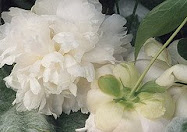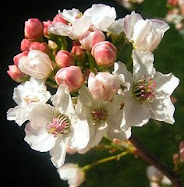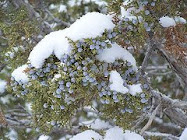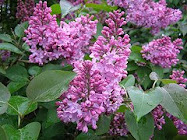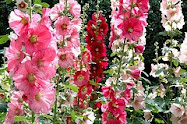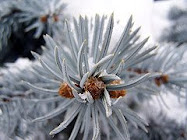 Maybe to an observer it looks like a lovely dalliance to collect baskets of fat, ripe tomatoes or snip bouquets of pastel blushing roses, but in reality gardening is hard work. It can be expensive enough to carve craters in the bank account if the common garden affliction of “plant lust” infects the gardener. And it requires a long-term commitment of resources, toil and time similar to, but much more labor-intensive than adopting a pet. A garden is never a finite task with a start, middle and completion, but rather a work-in-progress the gardener must continue to tend, tutor, define, discipline and support for all of the garden's lifespan.
Maybe to an observer it looks like a lovely dalliance to collect baskets of fat, ripe tomatoes or snip bouquets of pastel blushing roses, but in reality gardening is hard work. It can be expensive enough to carve craters in the bank account if the common garden affliction of “plant lust” infects the gardener. And it requires a long-term commitment of resources, toil and time similar to, but much more labor-intensive than adopting a pet. A garden is never a finite task with a start, middle and completion, but rather a work-in-progress the gardener must continue to tend, tutor, define, discipline and support for all of the garden's lifespan.Nonetheless, for those who'd like to like to harvest some of the rewards a garden brings without having to devote every fair-weather free hour to its care, or who are daunted by the seeming complexity and cost of cultivation, or discouraged by a big, empty, wildly needy arena of yard, there are approaches that will let the novice or the skint wade in the refreshing shallows of gardening, and avoid plunging headfirst into its subsuming depths. Let simplicity and thrift be the guiding principles behind nascent forays into gardening, and its pleasures can be realized by one and all.
Start small. If you have a whole yard without so much as a single crocus growing, or with unattractive landscaping like the drab, ubiquitous, evergreen shrubs that so often flank a house foundation, pick just one area to begin to remedy the emptiness and neglect. Make it a spot where you like to spend time outdoors (around a patio, in front of a porch), or that will enliven the view from windows (the borders of the front walk, the center of the back yard), or where something hideous needs to be removed (patches of weeds, dead or old, woody shrubs). Define a modest, limited area, such as a circular bed in the lawn, a half-moon bed by the front door, a foot of border along a walkway, and dig in. Don't be intimidated by thoughts of having to dig out the ancient roots of trees or shrubs that need to go, these can simply be sawn off at the ground and carted away. The roots will die out over time as long as any new shoots that appear are cut down.
Flower bulbs. For the sweetest, longest-lasting payback to the most minimal cost and effort, bulbs are the ticket. Just put them in the ground at the depth and season recommended and for years to come they will give the garden flowers. Replace the dirt from the hole dug for the bulbs with composted cow manure, cheap garden gold at about $3 for a 40-pound sack, and they will have all the natural fertilizer they need. Watering isn't needed except during lengthy drought. The only caution here is that most tulip bulbs, which are some of the pricer species, generally only flower well the first year, after which all they put forth are leaves. In addition, woodchucks, deer and rabbits love to feast on tulips. If you want tulips, look for the reputed naturalizing, multi-year types (though I haven't found these to live up very reliably to the claims of repeated bloom), and be prepared to spray the emerging plants with wild-forager repellents. Choose daylilies, windflowers, alliums, snowdrops, crocus, or any of the thousands of exuberant daffodils and narcissus on the market, and the wildlife will be less intrusive and your plantings will flower and spread farther every year. Add a few or a lot of bulbs -- depending upon time and budget -- each fall, and eventually the flower bulb gardens will expand into a Wordsworthian field of flowers.
Tight quarters. When fashioning a garden bed, stock it up with bulbs and plants to completely fill it out. If it gets too crowded for the plants to breath and stretch, it can always be cropped back, but a full bed will reduce the vacuum which nature abhors and always rushes to fill with weeds. A full bed will also shade the soil surface and thus preserve moisture in the soil. Thus will the maintenance time and chores of weeding and watering be reduced.
Container gardens. To truly limit garden labor demands, or if available space is very sparse (an apartment balcony, a condo sidewalk verge), put the garden into pots, barrels, window boxes, old watering cans, enamelware or biscuit tins, whatever takes your fancy. Just make sure the container has a hole or two in the bottom to drain off excess water, toss some pebbles or crystal rock into the pot to help retain moisture, and water regularly to offset the faster drying-out that occurs in an enclosed pot. You can plant pretty much anything from petunias to pepper plants in containers, and succulents, with their low-water requirements, do especially well. Scatter some mulch wood chips or pine needles on the top of the soil and the drying out will be slowed.
Seeds. Seeds are yep, dirt cheap, and aside from needing daily watering until they sprout (usually one to two weeks), can be easygoing, non-demanding garden dwellers. Go for the hardy, old-fashioned, readily-sprouting types rather than the fancy, hybrid, new-fangled princesses. Good choices include sunflowers, cosmos, bachelor buttons, bee balm, black-eyed susan, poppy, hollyhock, larkspur, lupine, morning glories, snapdragons, veronicas and yarrow to name just a few of the most strapping. Many of these will return and multiply year upon year.
Ground covers. Say goodbye to the infernal machine of the lawnmower, and don't trouble with watering cans after the first year. Many ground covers are soft and sturdy enough to walk upon, do just fine with miniscule amounts of rainfall once established, and bring flowers and fragrance in their bag of tricks. Some favorites which will stretch out farther and fuller by the year include creeping thymes, creeping phlox, creeping jenny, periwinkle, ivies, stonecrop sedums and chamomile.
Garden art. Another way to create still lifes and vignettes in your grounds while eschewing all forms of travail is to turn to garden art. Statues, antique furniture or housewares or farming tools, gazing globes, birdbaths and houses, pinecones and acorns, culled willow and grapevine-branch pergolas, boulders and beach stones and shells, water fountains, fairy houses, rustic furniture from tree stumps, and so the list continues of objects which can be scattered decoratively upon your landscape. Thrift store houseware sections, yard sales, junkyards, recycling centers, forests, riverbeds and your imagination will provide you with free or low cost objects to re-purpose as garden art.
Free plants. Lots that are slated for development bulldozers, neighbors who are dividing overgrown beds of iris, lilies, tradescantia, mums, and wild unoccupied public lands can all be sources of free shrubs, sapling trees, flowers and wildflowers. Carefully dig up with as many roots intact as possible and with dirt from the growing spot, ladle into a bucket of soil and transplant to your yard. Keep them moist for a few weeks (or twice weekly waterings for two summers for shrubs and trees), and a mostly free garden will ensue.
Gardens can become bossy, pricey, exhausting mistresses if allowed free rein. With wily forethought, keeping a ready eye out, and setting and sticking firmly to practicable ground rules, the gardener can remain in charge (for the most part and excepting the occasional weather temper tantrum) of purse strings and garden pursuits.


